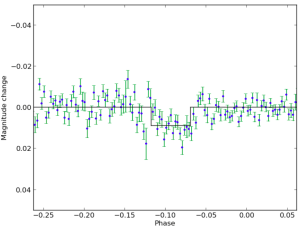At research group meeting on Thursday, we discussed a recent paper by Zhang and colleagues that investigated the performance of Canon’s EOS 60D and whether it was suitable to use for precision photometry to look for exoplanet transits.
Although the authors found the camera exhibited a few peculiarities (that are apparently not described in any of Canon’s documentation), they showed that it could be used to observe exoplanet transits — a really great result.
It means that astronomers, amateur or professional, who want to do transit observations don’t need to spend $10,000 to buy a high-end CCD camera. Instead, they can spend just a few hundred to produce reasonable quality transit light curves.
One especially tantalizing result from the paper: Zhang and colleagues mention having seen exoplanet transit-like signals for four of the target stars they studied, only one of which is known to host a planet — KELT-3 b. That means they may not only have recovered known transiting with the Canon EOS 60D; they may also have found three new ones. Presumably, they’re in the process of trying to confirm whether the other three are new planets.
UPDATE: The authors kindly updated me to say that follow-up observations indicated these three candidates are all false positives. But they would have discovered KELT-3 b with their survey, if it hadn’t already been discovered. So a pretty amazing achievement.
Attendees included Jennifer Briggs, Andrew Farrar, Nathan Grigsby, Emily Jensen, and Tyler Wade.
